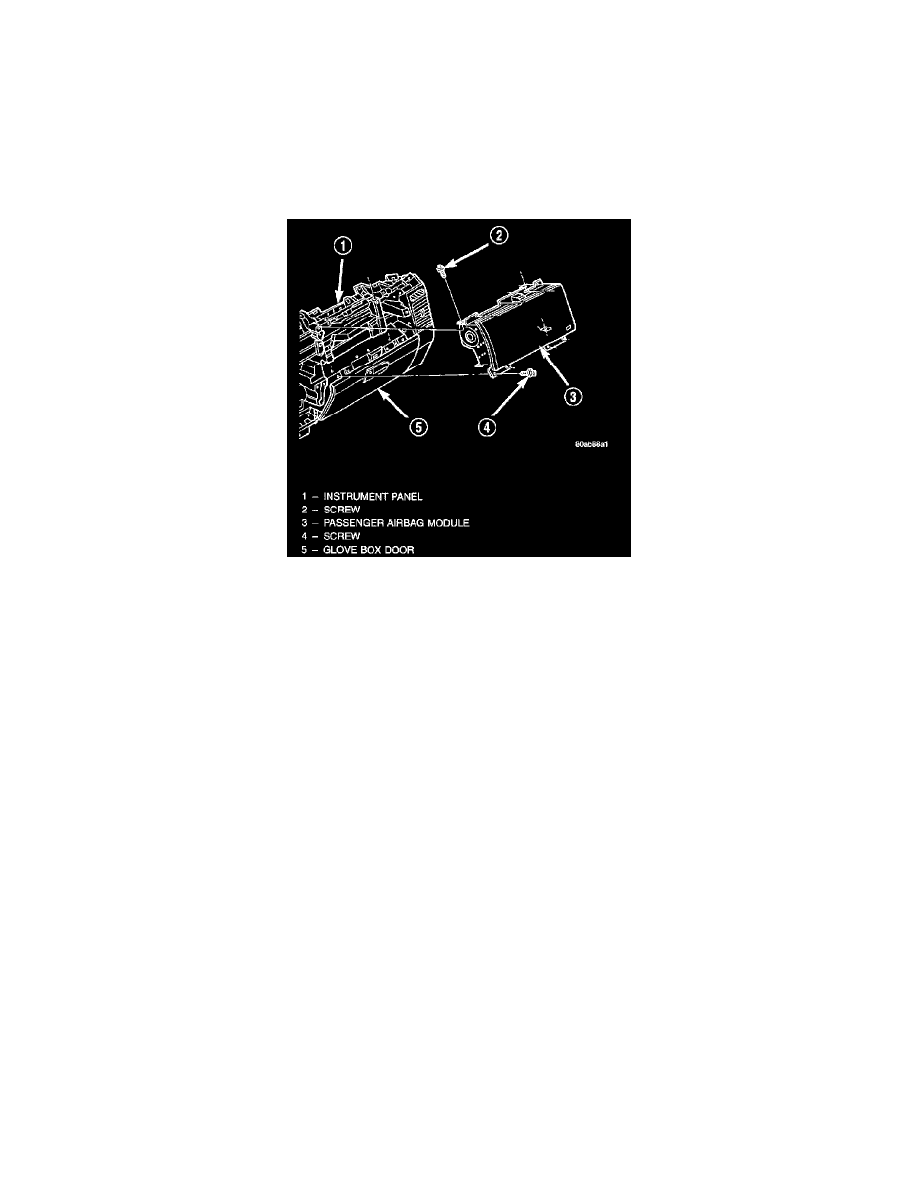Cherokee 4WD LHD L6-4.0L VIN S (2001)

a large quantity of nitrogen gas. The inflator is sealed to the back of the airbag housing and a diffuser in the inflator directs all of the nitrogen gas
into the airbag cushion, causing the cushion to inflate. As the cushion inflates, the driver airbag trim cover will split at predetermined breakout
lines, then fold back out of the way along with the horn switch. Following an airbag deployment, the airbag cushion quickly deflates by venting the
nitrogen gas towards the instrument panel through the porous fabric material used on the steering wheel side of the airbag cushion.
Some of the chemicals used to create the nitrogen gas are considered hazardous in their solid state, before they are burned, but they are securely
sealed within the airbag inflator. However, the nitrogen gas that is produced when the chemicals are burned is harmless. A small amount of residue
from the burned chemicals may cause some temporary discomfort if it contacts the skin, eyes, or breathing passages. If skin or eye irritation is
noticed, rinse the affected area with plenty of cool, clean water. If breathing passages are irritated, move to another area where there is plenty of
clean, fresh air to breath. If the irritation is not alleviated by these actions, contact a physician.
Passenger Side Airbag Module Remove/Install
PASSENGER AIRBAG
The passenger airbag (PAB) door on the instrument panel above the glove box is the most visible part of the passenger airbag. The airbag used in
this model is a Next Generation-type that complies with revised federal airbag standards to deploy with less force than those used in some prior
models. The passenger airbag is located in the instrument panel in front of the front seat passenger seating position, where it is secured with four
screws to the instrument panel structural duct. Concealed beneath the passenger airbag door are the folded airbag cushion, the airbag retainer or
housing, and the airbag inflator. The airbag inflator is a hybrid-type unit that is secured to and sealed within the extruded aluminum airbag housing
along with the folded airbag cushion. A yellow connector on the end of a short, two-wire pigtail harness connects the passenger airbag inflator to
the vehicle electrical system.
The molded plastic passenger airbag door also serves as a trim cover and has four flanges that secure it in place. Two of these flanges are the
return flanges, which extend over the upper and lower edges of the airbag housing. Three keyed slots on each of these return flanges are engaged
with tabs on the airbag housing to secure the door to the housing. The other two flanges are the mounting flanges, which extend upward and
downward respectively from the upper and lower edges of the passenger airbag door and are secured with four screws to the instrument panel
structural duct after the airbag housing has been secured to the instrument panel. Following a passenger airbag deployment, the passenger airbag
and the passenger airbag door must be replaced. The passenger airbag cannot be repaired, and must be replaced if faulty or in any way damaged.
The passenger airbag door can be disassembled from the air-bag housing and replaced as a separate service item.
The passenger airbag is deployed by an electrical signal generated by the Airbag Control Module (ACM) through the passenger airbag line 1 and
line 2 (or squib) circuits. The hybrid-type inflator assembly includes a small canister of highly compressed argon gas. when the ACM sends the
proper electrical signal to the airbag inflator, the electrical energy generates enough heat to ignite chemical pellets within the inflator. Once
ignited, these chemical pellets burn rapidly and produce the pressure necessary to rupture a containment disk in the argon gas canister. The inflator
and argon gas canister are sealed to the airbag cushion so that all of the released argon gas is directed into the airbag cushion, causing the cushion
to inflate. As the cushion inflates, the passenger airbag door will split at predetermined breakout lines, then fold back over the top of the
instrument panel and out of the way. Following an airbag deployment, the airbag cushion quickly deflates by venting the argon gas through the
porous fabric material used on each end panel of the airbag cushion.
Some of the chemicals used to create the pressure to burst the argon gas containment disk are considered hazardous in their solid state, before they
are burned, but they are securely sealed within the AIRBAG inflator. However, the gas that is produced when the chemicals are burned is
harmless. A small amount of residue from the burned chemicals may cause some temporary discomfort if it contacts the skin, eyes, or breathing
passages. If skin or eye irritation is noticed, rinse the affected area with plenty of cool, clean water. If breathing passages are irritated, move to
another area where there is plenty of clean, fresh air to breath. If the irritation is not alleviated by these actions, contact a physician immediately.
